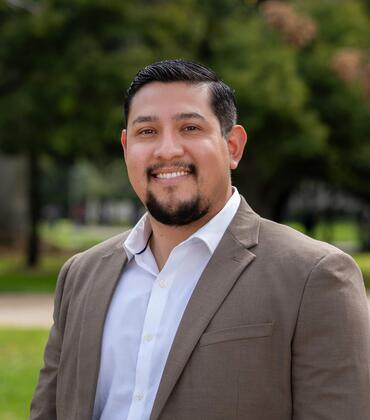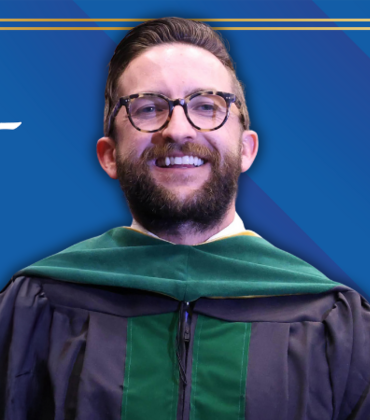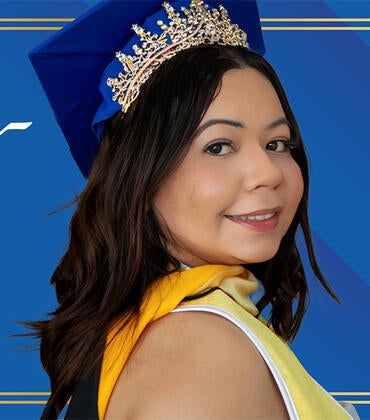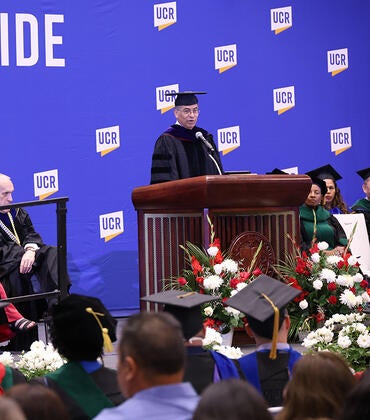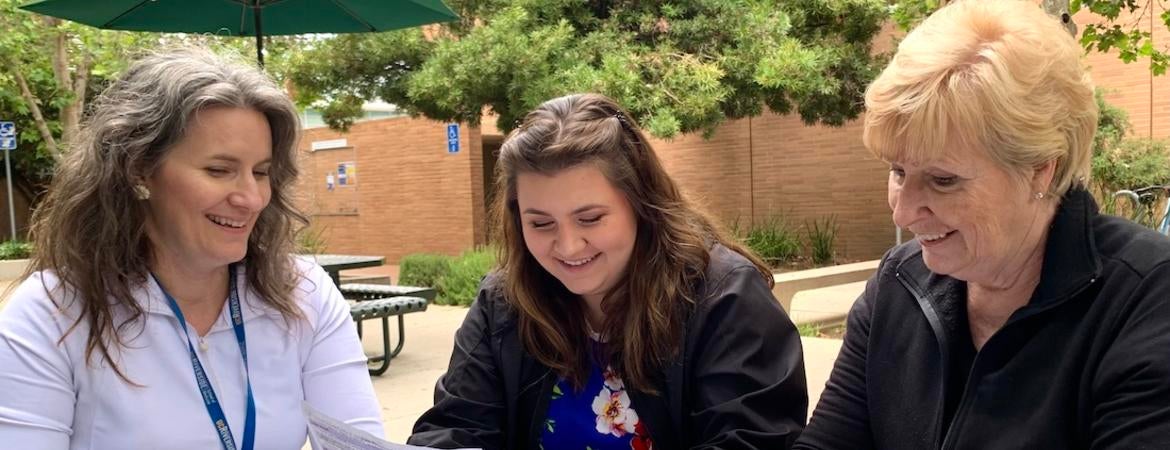
The medical student had barely entered the examination room when the woman inside started shouting. “I thought I could trust you!” she yelled, hurling a stream of criticism about her medical treatment.
Fortunately for all involved, the situation was a simulated patient encounter in the UCR School of Medicine. The exercise forces students to think on their feet and cope with the unexpected—exactly what they’ll need to do once they become doctors. “They’re really taken aback because they’ve never seen this,” the woman in the scenario, Emily Escalona, recalled. “We’re never difficult patients [in these simulations], we’re always very nice and compliant.” Watching students successfully work through their surprise makes it one of Emily’s favorite roles as a standardized patient.
Around 94% of medical schools in the U.S. use standardized patients (also known as simulated patients), or SPs. The job involves everything from acting as patients to teaching specific skills and even grading medical students.
“The goal is that they look like any patient one of our students might encounter in the clinics and hospitals they serve,” said Kerensa Peterson, the Standardized Patient Program Supervisor at the UC Riverside School of Medicine. As a result, they can be anyone. “SPs are highly trained laypeople from a variety of backgrounds, such as education, coaching, and customer service,” Peterson explained.
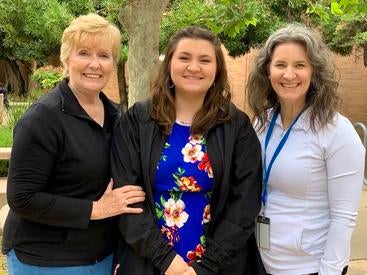
Emily found the part-time role posted on Craigslist in 2013. Within a few years, her mother Diana Ray and two of her daughters, Diana and Valerie Escalona, joined her in working with medical students at UC Riverside and Loma Linda University Medical Center.
According to Emily, people often believe that students draw SPs’ blood or only use them for practice for eye or ear exams. She said that’s a misconception. “We’re not just bodies,” her daughter Diana put in. “We’re much more than that.”
In fact, the role requires far more involvement and medical knowledge than simply memorizing a few lines.
“My husband jokes that I’m almost a doctor,” said Emily, laughing. “We can tell you every muscle, bone, and nerve in the body because we do it so many times,” her mother, the elder Diana, added.
Most SPs don’t have any medical experience; they learn everything they need to know on the job. The approximately 70 SPs at the UCR School of Medicine train for anywhere from one to six hours for each session that involves teaching students, even if they have previously covered the material. When playing patient roles, they memorize an extensive background of their character, including whether they smoke, what medications they use and don’t use, and where the character feels pain, so they can accurately interact with and assess students.
They also need to know when to volunteer this information in their patient role. “We can’t go in and say, ‘This hurts, it’s been hurting for three days and the pain comes and goes,’” Emily said, explaining that it would make it too easy for students. “We have to sit there and wait until they ask just the right way. And if they don’t ask, we don’t offer the information.”
As a result, being an SP is different from a regular acting role. “We don’t have the liberty to improvise, otherwise it wouldn't be standardized,” Emily said.
Another difference? The assessment goes both ways. While the student is conducting their examination, they’re simultaneously being evaluated—and graded—by their patient. This means the SPs must not only understand their own role, but also know how the students are supposed to respond so they can grade their performance accurately and fairly.
Diversity is another very important aspect of the SP role, from varied backgrounds to a range of body types to different ages. The younger Diana plays everything from teenagers to 40-year-old women. (“Forty was pushing it,” said her mom.) Among other roles, her grandmother sometimes plays an elderly woman dealing with end-of-life care, and said she’s tearful each time. “The students learn to handle an elderly person, a person who’s facing end-of-life decisions, religious issues, and issues with adult children. If I cry, what are they going to do?” she said. “It’s something they’re going to have to deal with.”
After nearly a decade of playing patient roles in medical schools, the family enjoys watching students improve over the course of their training. “We saw them when they started, and now they’re fourth years, and they’re already looking ahead,” said Emily of their recent group of students. “They’ve grown and they’ve changed and now they’re confident.”
The SPs themselves may play a role in this development. A recent study in nursing students is part of a body of research suggesting that interacting with standardized patients may help increase students’ abilities and self-confidence.
Besides providing a realistic case for practice, the SPs further help students evolve as doctors by offering their honest opinions on their experience as patients. Emily and her mother said that the students are usually very appreciative of their comments. “Every time I’ve given them feedback, they’ll say, ‘Oh, thank you, I’ll work on that!’” said Diana, adding that she enjoys connecting with students and offering encouragement.
As we talked, Emily waved to a student in scrubs walking across the courtyard after a morning spent in the Center for Simulated Patient Care. “Thank you all so much!” he called to the three women as he passed.
The family plans to continue helping students receive the most realistic medical training possible. “You feel like you’re doing something important that’s going to affect students’ success and their future as doctors,” said the elder Diana earnestly. “It’s a small role in their lives, but it’s important.”
